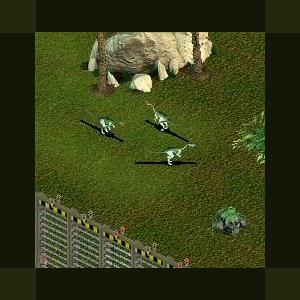About This File
Technosaurus
Technosaurus (TEK-no-SAWR-us) was a Triassic ornithischian dinosaur. It was a small, lightly build herbivore reaching the length of 3 feet and running on its hind legs. The holotype apparently includes some prosauropod hatchling material. Technosaurus lived in North America and is named in honor of Texas Tech University. The type species, Technosaurus smalli, was named by Sankar Chatterjee in 1984.
Technosaurus is based on TTUP P9021, which initially consisted of a premaxilla (tip of the upper jaw), two lower jaw pieces, a back vertebra, and an astragalus. Technosaurus and its type species, T. smalli, were named by Sankar Chatterjee in 1984. He described it as a fabrosaurid,a clade of small early ornithischians now considered to have been an artificial grouping. Material from the quarry where P9021 was found is disassociated and comes from a variety of Late Triassic animals, which would prove problematic.
The genus was reviewed in 1991 by Paul Sereno, who interpreted the premaxilla and a fragment from the front of the lower jaw as pertaining to a hatchling prosauropod, and found the vertebra to be indeterminate and the astragalus an unidentifiable fragment. Thus, he restricted the remains to be considered Technosaurus to the second lower jaw piece, a posterior fragment. It was further reviewed in the light of new remains that spurred reevalutation of purported Triassic dinosaurs, particularly ornithischians named from tooth or jaw material. Irmis et al. (2007) agreed with the removal of the vertebra and astragalus, but found no characteristics that were unambiguously dinosaurian in the skull fragments. They noted similarities to Silesaurus in the jaw fragments Sereno had excluded, and themselves excluded the posterior fragment as actually belonging to the unusual rauisuchian Shuvosaurus.These authors would later restate their case, concluding that Technosaurus, defined only by the premaxilla and non-Shuvosaurus lower jaw fragment, was a valid, diagnostic genus, but could not be definitely classified beyond Archosauriformes incertae sedis, and was unlikely to be either an ornithischian or sauropodomorph dinosaur.



Recommended Comments
There are no comments to display.
Create an account or sign in to comment
You need to be a member in order to leave a comment
Create an account
Sign up for a new account in our community. It's easy!
Register a new accountSign in
Already have an account? Sign in here.
Sign In Now